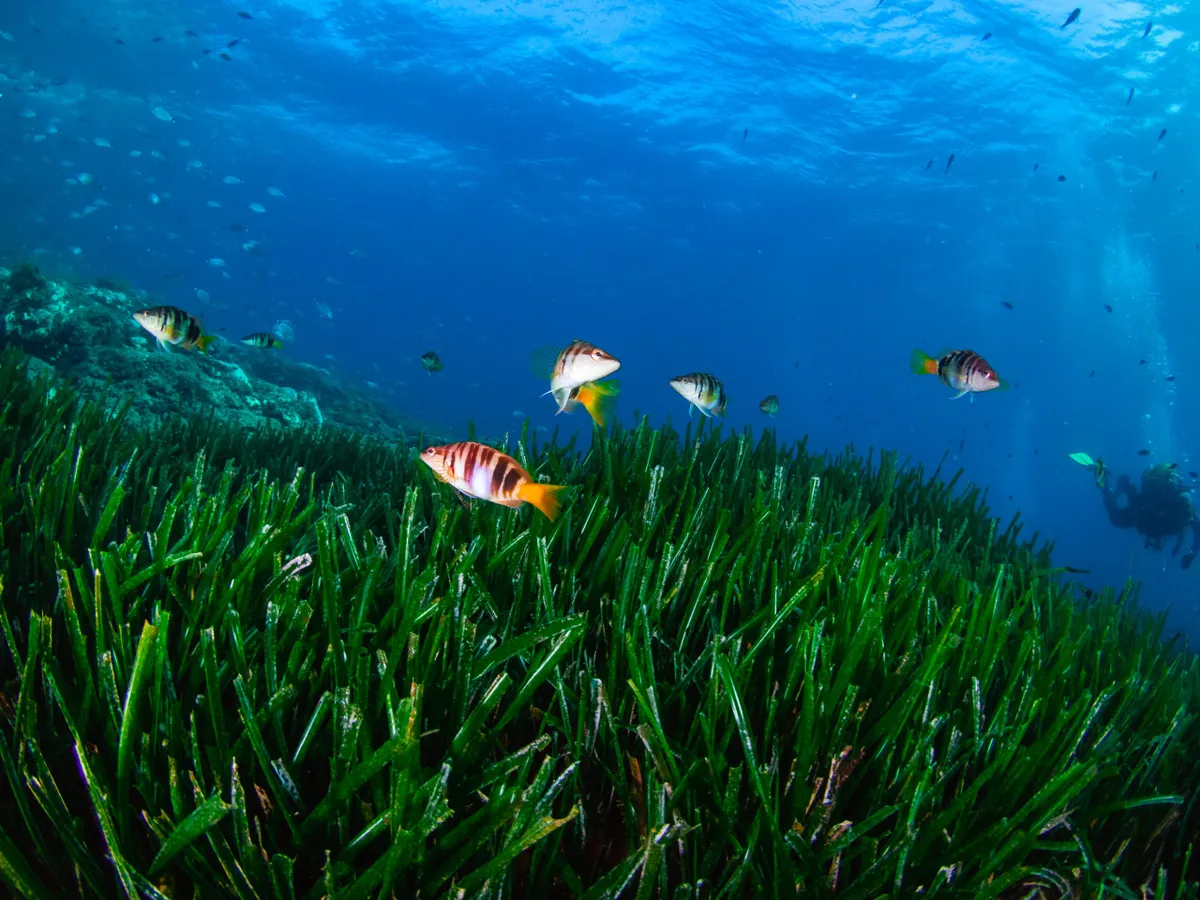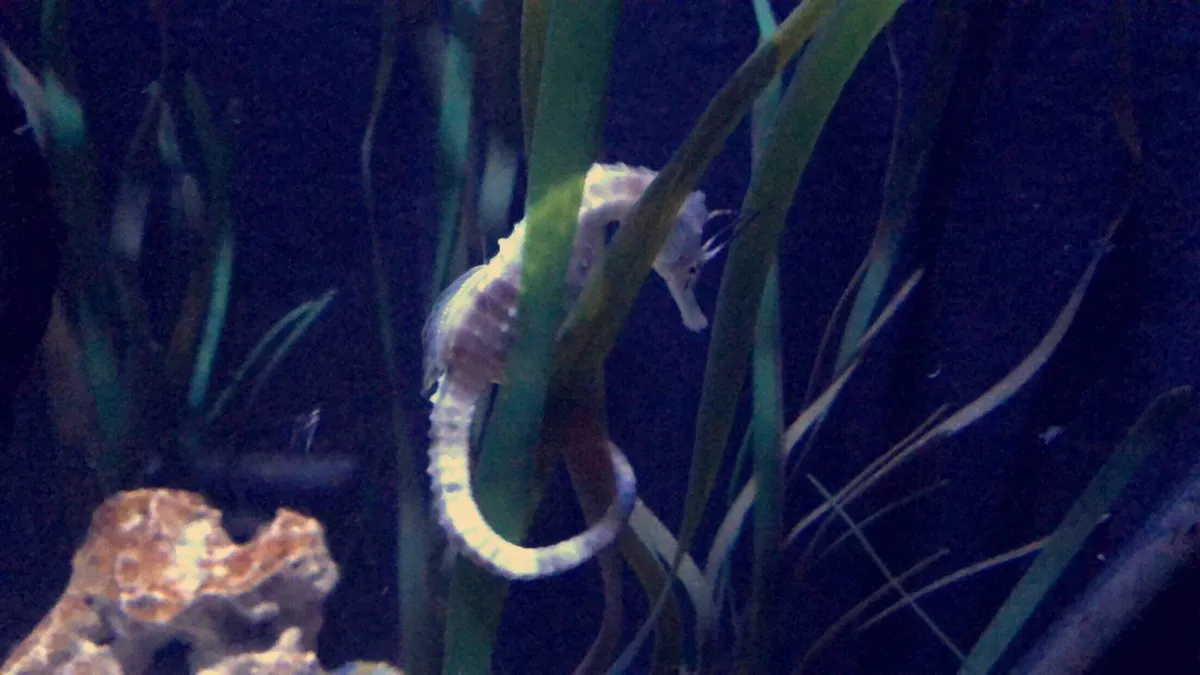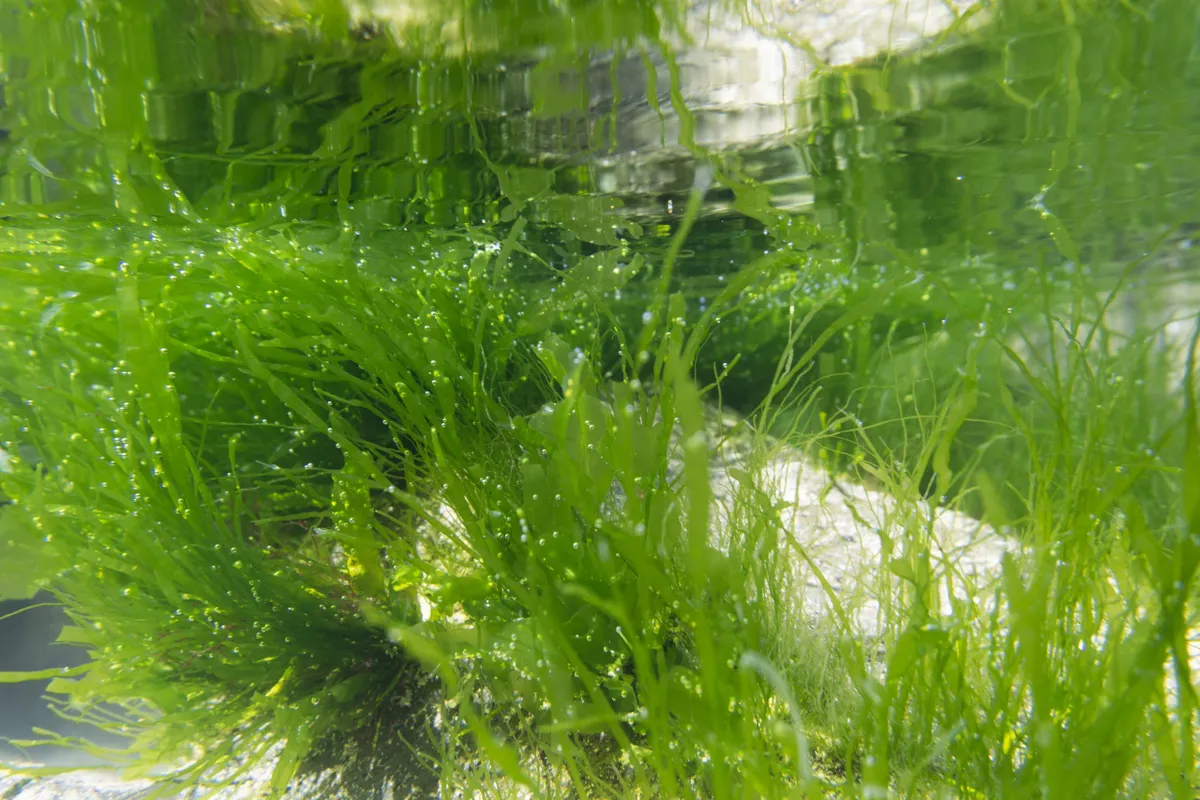Hidden under the waves, the humble seagrass remains relatively unknown by many of us, but this unassuming-looking plant plays an important role in restoring the health of our coastal ecosystems and fighting the climate crisis. Discover more about this once-common marine plant and the vast seagrass meadows being replanted around the UK coast.
Seagrass has suffered huge declines globally and in the UK. Find out why it is so beneficial to marine species, how it can help reduce global heating and what can be done to save it.
What is seagrass?
It is now known as a ‘wonder plant’, but for a long time seagrass remained on the periphery of marine conservation, despite providing a valuable habitat that rivals that of more ‘charismatic’ mangrove forests and coral reefs. The most common seagrass in the UK is Zostera marina, also known as common eelgrass. It is a grass-like flowering plant with dark-green, ribbon-shaped leaves reaching 20-50cm in length, and forms dense underwater meadows.
Where is it found?

Seagrass is widespread in the cooler ocean waters of the North Atlantic and North Pacific, and has a restricted distribution in the Mediterranean. In the UK, it has a patchy distribution around our coast but can be found in shallow, sheltered waters, typically inlets, bays and estuaries.
Can it help combat the climate crisis?
Seagrass meadows are able to store carbon dioxide, which contributes to global heating, at a rate 35 times faster than tropical rainforests. The plant’s ability to remove this gas from the atmosphere makes it a vital tool in fighting the climate crisis. In fact, though seagrass currently cover just 0.2% of the seafloor, it absorbs 10% of the ocean’s carbon each year.
How does it support other species?

Scientists and conservationists now recognise seagrass meadows as highly important coastal ocean habitats, holding 40 times more marine life than seabeds without grass. Sea snails, endangered seahorses and 50 species of fish frequent these underwater meadows, which support 20% of the world’s biggest fisheries, acting as fish nurseries for cod, plaice and pollock.
What other benefits does it have?
Seagrass meadows help prevent coastal erosion, as their long blades counter the ocean’s swell and provide a buffer to storm damage. They also clean our oceans by absorbing polluting nutrients produced by humans and reducing bacterial pathogens.
Why is it threatened?
At least 35 per cent of seagrasses worldwide have been lost or degraded over the past 40 years. Once common in British waters, it is now thought that only 20 of our 155 estuaries currently contain the plant. The decline is due to coastal development, increased pollution (caused by excessive amounts of nitrogen from agriculture and sewage entering coastal waters), and human disturbance from boating and trawling.
How is it being protected?

Reducing the number of traditional moorings, which scrape seagrass blades, is crucial; in a joint three-year venture, the Marine Conservation Society has teamed up with Princess Yachts and the Ocean Conservation Trust to install 15 ‘helical’ (corkscrew) moorings in Cawsand Bay, Plymouth. These have already enabled re-growth at the base of the mooring chains, making beds denser and blades longer, and a new project has been set up to spread these moorings along England’s south coast.
What else is being done?
Scientists and conservationists are pioneering new and innovative ways to restore seagrass meadows around the UK coast. 800,000 seeds have been planted in Dale Bay, Pembrokeshire by the Seagrass Ocean Rescue project, a collaboration between Swansea University, Sky Ocean Rescue and WWF. It is hoped this will create 20,000m² of seagrass meadow and lead to more large-scale restoration projects across the UK.
